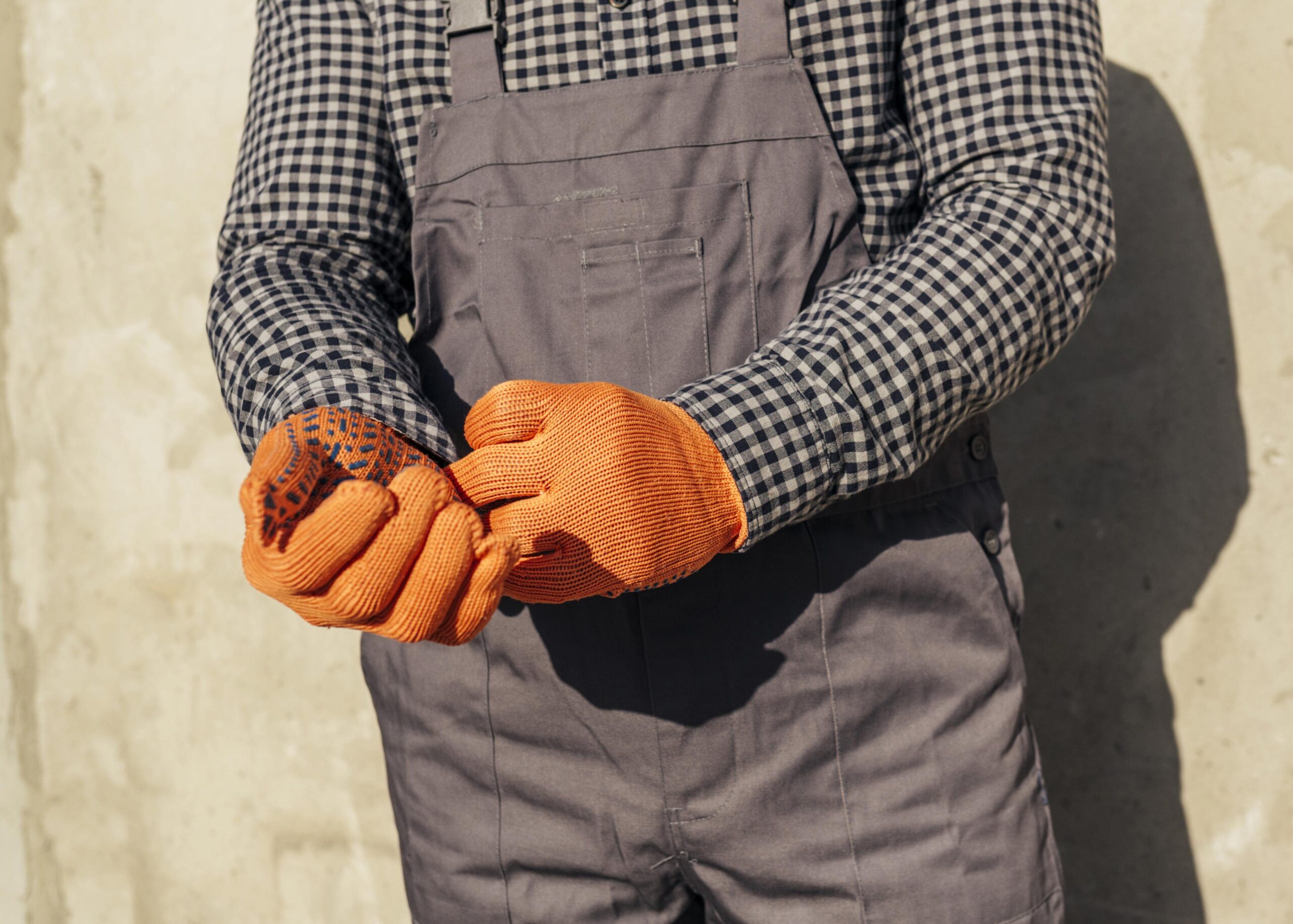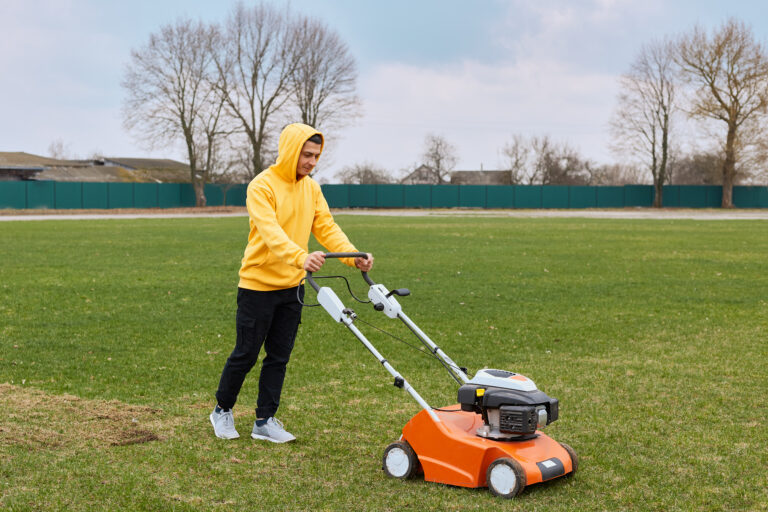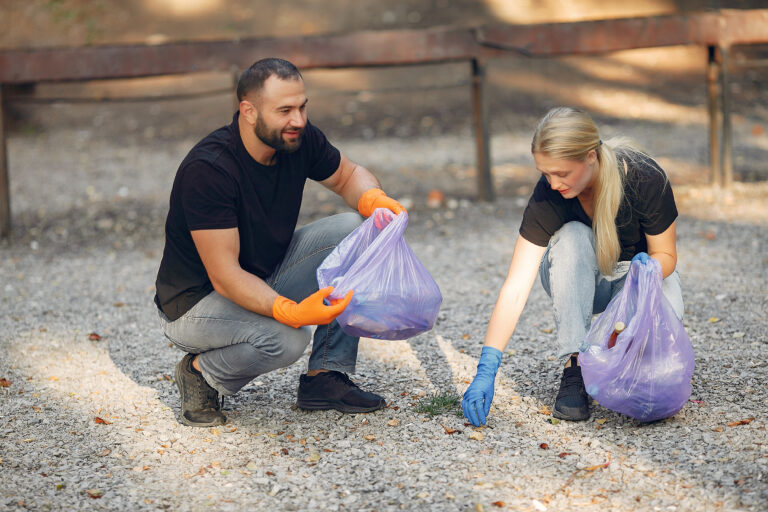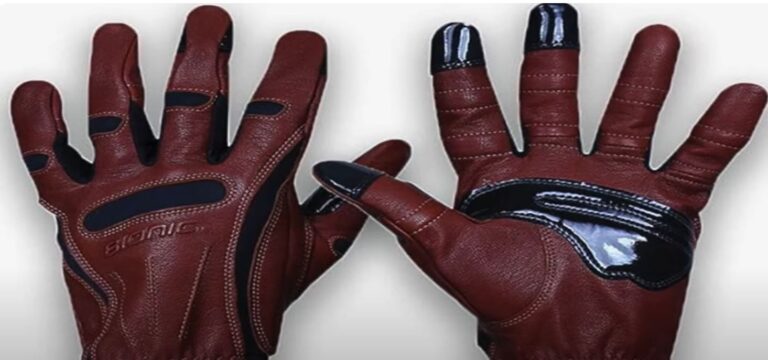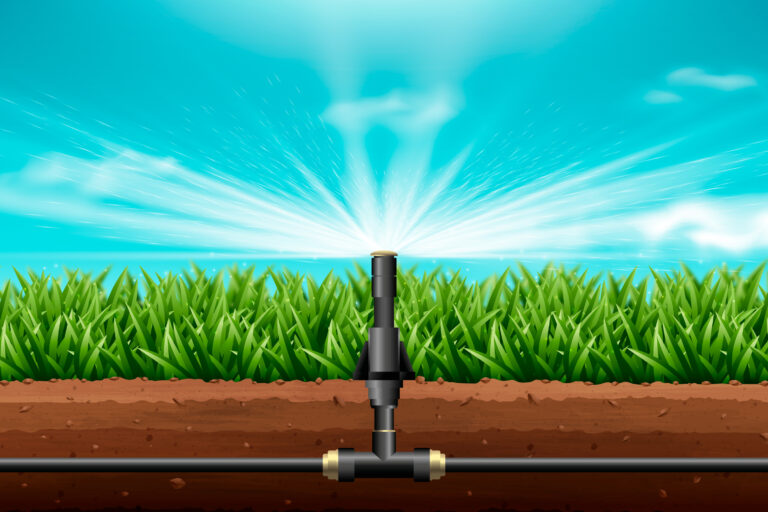5 Best Leather Gardening Gloves for Men in 2025
Every male gardener knows that the hands are the most important tools in the shed.
They are also the most vulnerable. That’s why every man who’s spent an afternoon taming a wild rosebush or handling a thorny branch understands the critical need for truly durable hand protection.
It’s not about avoiding hard work; it’s about prioritizing smart gardening safety to prevent splinters, blisters, and punctures that can sideline your passion.
While many gardeners reach for synthetic or rubber-coated gloves, they simply don’t offer the unique benefits of quality leather gloves. The natural toughness of leather provides unmatched durability, resisting the constant wear and tear from rough branches and abrasive surfaces.
Its dense, puncture-resistant hide offers superior thorn resistance, a non-negotiable feature when handling roses, blackberries, or other prickly plants.
Furthermore, leather is breathable and, over time, molds to the shape of your hands, providing a custom-made comfort fit that improves with every use.
But not all men’s gardening gloves are created equal. In this review, we’ll cut through the noise to find practical, tested gloves that strike the perfect balance between rugged toughness and comfortable functionality, ensuring your hands are protected without sacrificing the dexterity you need.
Product Reviews – Best Leather Gardening Gloves for Men
1. Wells Lamont HydraHyde Leather Gloves

Intro: A trusted name in workwear for over a century, Wells Lamont is known for classic quality. Their standout feature is the patented HydraHyde technology, which makes the leather soft and water-resistant. Amazon highlights this glove as a “customer favorite for its durability and comfortable fit.”
Specifications:
- Leather Type: Cowhide
- Size Range: Small to XX-Large
- Lining: Unlined for maximum dexterity
- Intended Use: General gardening, landscaping, and all-purpose work
My Experience: I found these to be the perfect all-purpose gloves. The HydraHyde leather truly lives up to its name; it resisted getting stiff and hard after being soaked during a morning of shoveling soil in damp conditions. The gloves are tough enough for handling tools and moving rough branches, yet they break in quickly, providing an ergonomic fit. While they are not dedicated thorn proof gloves, they provided adequate protection against smaller thorns and splinters. They are a workhorse pair of landscaping gloves that feel reliable on the job.
Pros:
- Excellent durability and water resistance.
- Comfortable, breaks in to fit the hand well.
- Good value for the quality.
- Great grip on tools, wet or dry.
Cons:
- Not suitable for heavy thorn protection (e.g., roses).
- Can be a bit stiff for the first few uses.
Best For: All-purpose gardening and landscaping gloves where durability and weather resistance are key.
2. Exemplary Gardens Pro-Gardening Gauntlet Gloves

Intro: Exemplary Gardens specializes in premium gardening equipment, and their Pro-Gardening Gloves are a testament to that. Their standout feature is the extra-long gauntlet cuff, designed specifically for heavy-duty protection. This product is a top-selling item on Amazon, highlighted for being “the ultimate in puncture resistance and forearm protection.”
Specifications:
- Leather Type: Goatskin and split pigskin
- Size Range: Medium to X-Large
- Lining: Soft, breathable lining
- Intended Use: Rose pruning, heavy brush clearing, handling thorny plants
My Experience: These gloves are a must-have for anyone dealing with roses or thorny bushes. I used them for pruning roses, and the extended gauntlet provided invaluable protection for my forearms. I was able to reach deep into a rosebush without worrying about scratches. The combination of goatskin and pigskin makes them incredibly puncture-resistant while still offering enough flexibility to use hand pruners. They are truly thorn proof gloves and performed exactly as promised.
Pros:
- Exceptional forearm and hand protection from thorns.
- The gauntlet design prevents scratches from dense vegetation.
- Durable construction stands up to heavy pruning.
Cons:
- Bulky for delicate tasks like pulling small weeds.
- Can feel warm in hot weather despite the lining.
Best For: Rose gloves and clearing thorny brush.
3. Legacy Gardens Artisan Gloves

Intro: Legacy Gardens focuses on the craft of gardening, and their gloves reflect a commitment to a premium feel and high dexterity. Their standout feature is the incredibly supple, yet strong, goatskin leather. Amazon highlights them as “the perfect balance of strength and sensitivity for fine gardening.”
Specifications:
- Leather Type: Goatskin
- Size Range: Small to X-Large
- Lining: Unlined for maximum feel
- Intended Use: Detailed pruning, weeding, planting seedlings
My Experience: I found these gloves to be a joy to wear for fine gardening work. The goatskin is buttery soft and offers an incredible amount of dexterity. I could easily feel and pull small weeds, handle tiny seedlings, and operate my bypass pruners with precision. They feel like a second skin. While they offer decent protection, I would not use them for handling large thorns or heavy-duty work. They are about feel and control, not ruggedness.
Pros:
- Superior dexterity and feel.
- Comfortable, lightweight, and form-fitting.
- Excellent for detailed garden work.
- High-quality craftsmanship.
Cons:
- Not durable enough for heavy, rough work.
- Vulnerable to large thorns and punctures.
Best For: Delicate pruning and fine gardening.
4. Amazon Basics Leather Work Gloves

Intro: The Amazon Basics brand is synonymous with reliable, no-frills quality at an accessible price point. Their leather work gloves are built for pure utility and tough jobs. The standout feature is the low cost, with Amazon highlighting them as “the go-to choice for heavy-duty, no-nonsense protection.”
Specifications:
- Leather Type: Cowhide split leather
- Size Range: Small to XX-Large
- Lining: Lined with a fleece-like material
- Intended Use:
Landscaping, heavy yard work, construction
My Experience: These are the quintessential work gloves for tough, dirty jobs. I used them for shoveling soil and moving piles of wood, and they held up perfectly. They are durable, but you sacrifice some comfort and fit for the price. The gloves can be stiff, and the fit is less precise than a premium pair. However, for a demanding task where you need a glove that can take a beating without worrying about the cost, these are an excellent choice. They are true heavy-duty gloves.
Pros:
- Extremely affordable.
- Very durable for rough and heavy work.
- Lined for added comfort.
- Great for projects where you don’t want to ruin an expensive pair.
Cons:
- Stiff and less comfortable than premium gloves.
- Lacks the dexterity for fine gardening tasks.
Best For: Heavy-duty landscaping and rough yard work where you need a workhorse glove.
5. Comparison Table
Buying Guide: Features to Look for in Men’s Leather Gardening Gloves
Choosing the right pair of leather gloves goes beyond just picking the first pair you see. A discerning gardener should consider several key features to ensure the gloves are perfectly matched to their specific needs.
Material Types
The type of leather used is the most important factor, as it dictates the glove’s primary function.
- Cowhide Leather: This is the most common and widely available type of leather for work gloves. Cowhide gloves are known for their exceptional toughness and abrasion resistance. They are a workhorse material, ideal for heavy-duty tasks like moving rocks, clearing brush, or digging. While it can be stiff at first, it will soften and break in over time.
- Goatskin Leather: Goatskin is a thinner and more supple leather than cowhide, making it incredibly popular for gloves that require high dexterity. Goatskin gloves offer a superior feel and touch sensitivity, making them perfect for precise tasks like pruning, weeding small plants, or handling delicate flowers. It still provides excellent thorn resistance but is not as rugged as cowhide for heavy-duty, abrasive work.
- Pigskin Leather: Pigskin is a great middle-ground option. It is more flexible and breathable than cowhide, and it resists getting stiff and hard after getting wet. This makes it an excellent choice for gardeners who work in damp or humid conditions.
Fit and Sizing
A proper fit is crucial for both comfort and performance. An ill-fitting glove can lead to blisters and a poor grip on your gardening tools.
- Men’s Sizing: Look for gloves specifically sized for men’s hands, which are typically larger and wider than women’s. Many brands offer a range of sizes (S, M, L, XL) to ensure a snug fit.
- Adjustable Cuffs: A glove with an adjustable cuff (often with Velcro or an elastic band) is a valuable feature. It allows you to secure the glove around your wrist, which prevents dirt, debris, and insects from getting inside the glove while you work.
Protection Level
Match the glove’s protection level to the type of work you’ll be doing.
- General Gardening: For everyday tasks like weeding and planting, a standard cowhide or pigskin glove will suffice.
- Rose Pruning & Thorny Plants: For a serious defense against sharp thorns, look for dedicated rose pruning gloves. These gloves are often made of thick leather and have an extra-long, gauntlet-style cuff to protect your forearms.
- Heavy Digging & Landscaping: When using a shovel or pickaxe for heavy digging, you’ll need a rugged cowhide glove with reinforced seams and palms to handle the stress.
Comfort Features
The little details can make a big difference in how comfortable and effective a glove is.
- Padded Palms: For tasks involving heavy vibrations, like using a power tiller, or repetitive motions like shoveling, gloves with padded palms are a game-changer. The padding absorbs shock and reduces hand fatigue, helping to prevent blisters.
- Breathable Lining: As previously mentioned, a breathable lining is essential for wicking away sweat, keeping your hands cool and dry, and making the gloves comfortable for extended use.
- Reinforced Fingertips: The fingertips are a high-wear area. Look for gloves with reinforced tips to extend their life and prevent tears.
Usability
Finally, consider the primary use case. Are you looking for a glove for all-around use or a specialist glove for a specific task? A good strategy is to have a lighter-duty pair (goatskin or bamboo) for fine work and a heavier-duty pair (cowhide with a gauntlet) for the tough, demanding jobs. This ensures you always have the right tool for the task at hand.
Why Choose Leather Gardening Gloves?
For generations, the most trusted tool a gardener has is a good pair of hands. To protect those hands from the rigors of the garden, nothing beats the natural properties of leather. While synthetic and fabric gloves have their place, the unique qualities of leather gloves make them the superior choice for a male gardener seeking true performance, protection, and longevity.
Durability and Longevity
The primary reason to choose leather is its unmatched durability. Fabric and rubber-coated gloves may be inexpensive, but they are prone to tearing, fraying, and wearing out quickly, especially when faced with abrasive surfaces or sharp objects. A high-quality pair of cowhide leather gloves, however, is a long-term investment. They are built to withstand the constant friction and abuse of gardening tasks, resisting punctures and tears in a way synthetic materials simply cannot. With proper care, a good pair of leather gardening gloves will outlast multiple pairs of fabric gloves, proving to be more economical in the long run. They are not just gardening gloves; they are true work gloves designed for the toughest jobs.
Protection
The protective qualities of leather are non-negotiable for serious gardeners. The dense hide provides a strong physical barrier between your hands and the many hazards found in the garden. This is most evident in a glove’s thorn resistance. When you’re tackling overgrown rose bushes, handling prickly cacti, or pulling thorny vines, a thorn proof glove is your best defense. The thick hide of materials like cowhide is highly resistant to punctures, a feature fabric gloves cannot replicate. Leather also offers a superior defense against splinters from wood, sharp branches, and even minor scrapes from gardening tools like pruners or shovels. This level of comprehensive protection is essential for maintaining gardening safety.
Grip and Dexterity
A common misconception is that leather is too stiff for delicate tasks. While new leather gloves may be rigid, they quickly break in and conform to the unique shape of your hands. This process creates a custom, ergonomic fit that provides a secure and confident grip. Unlike some synthetic gloves that can feel slick when wet, leather maintains its tactile grip on gardening tools, even in damp conditions. A well-fitting leather glove allows for a surprising degree of dexterity, enabling you to handle a shovel with a firm grip, operate pruning shears with precision, and even pull stubborn weeds without the glove bunching up.
Comfort and Fit
Comfort is not sacrificed for toughness. Over time, leather gloves mold to the wearer’s hands, creating a personalized fit that reduces hand fatigue and prevents blisters. Many modern leather gloves for men are also designed with a breathable lining that helps wick away moisture. This feature is particularly important for men’s gardening gloves, as it keeps hands from getting sweaty and uncomfortable during long hours of work. The combination of a natural material that “breathes” and a lining that manages moisture makes leather gloves a comfortable choice for all-day use.
FAQs About Men’s Leather Gardening Gloves
Are leather gloves better than synthetic ones for gardening?
This is a key question, and the answer depends on your priorities. For sheer durability and puncture resistance, leather is generally superior, especially for heavy-duty tasks. It’s the go-to material for true thorn resistant protection. Synthetic gloves, on the other hand, often excel in flexibility, dexterity, and breathability right out of the box, and many are machine-washable. However, they typically wear out faster and offer less protection against sharp objects. Ultimately, the best choice for men’s gloves depends on the specific task.
How do I clean and care for leather gardening gloves?
Proper glove care is essential to maintain the life and flexibility of your leather gloves.
- Remove Dirt: Allow any mud or dirt to dry completely. Once dry, use a stiff brush to gently remove the debris.
- Clean: Spot clean any remaining stains with a damp cloth and a small amount of mild soap or saddle soap. Avoid soaking the gloves in water, as this can make the leather stiff.
- Dry: Air-dry the gloves in a cool, ventilated area away from direct sunlight or heat sources, which can cause the leather to crack and become brittle.
- Condition: Once the gloves are dry, apply a leather conditioner to restore their suppleness and prevent cracking.
Which leather type offers the most flexibility?
Goatskin leather is widely regarded as the most flexible and supple leather type for gardening gloves. While it is thinner than cowhide, its natural lanolin content makes it soft, flexible, and surprisingly durable. This combination makes goatskin gloves ideal for tasks that require a high degree of dexterity, such as planting, weeding, or handling delicate pruners.
Can leather gloves be waterproofed?
Yes, they can. While some leather gloves are sold with a factory waterproofing leather treatment (like Wells Lamont’s HydraHyde technology), you can apply a waterproofing wax, cream, or spray to most leather gloves. These products create a protective barrier that causes water to bead up and roll off the surface. It is important to note that this makes them water-resistant, but they are not fully waterproof, especially at the seams.
Are leather gloves safe for handling thorny roses?
Yes, leather gloves are the safest option for handling thorny plants like roses, but it is crucial to choose the right kind. Standard leather gloves may offer some protection, but for true garden safety, you need gloves specifically designed for this purpose. Look for thorn proof rose gloves made from thick leather (like cowhide) or a reinforced blend. The best options will also feature a long, gauntlet-style cuff to protect your forearms from scratches.
7. Conclusion
In the world of gardening, leather remains the top choice for men’s gardening gloves due to its unmatched balance of durability, protection, and comfort. While synthetic materials have their advantages, no other material can provide the robust thorn resistance and longevity of a quality leather glove. By understanding the unique benefits of leather and selecting a pair with features that match your needs, you are not just buying a tool—you are making an investment in your gardening success and safety.
Quick Recommendations:
- Best for Roses: The Exemplary Gardens Pro-Gardening Gauntlet Gloves are a must-have for their superior thorn resistant gauntlet design.
- Best for Landscaping: Wells Lamont HydraHyde Leather Gloves are the perfect all-around heavy-duty gloves that combine durability with weather resistance.
- Best Value: The Amazon Basics Leather Work Gloves are a rugged, no-frills option that provides reliable protection for tough work at an unbeatable price.
Ultimately, the best ergonomic gloves for you are the ones that feel like a natural extension of your hands. So, choose gloves that match your gardening style, provide the protection you need, and allow you to enjoy every moment in your garden with confidence and comfort.

